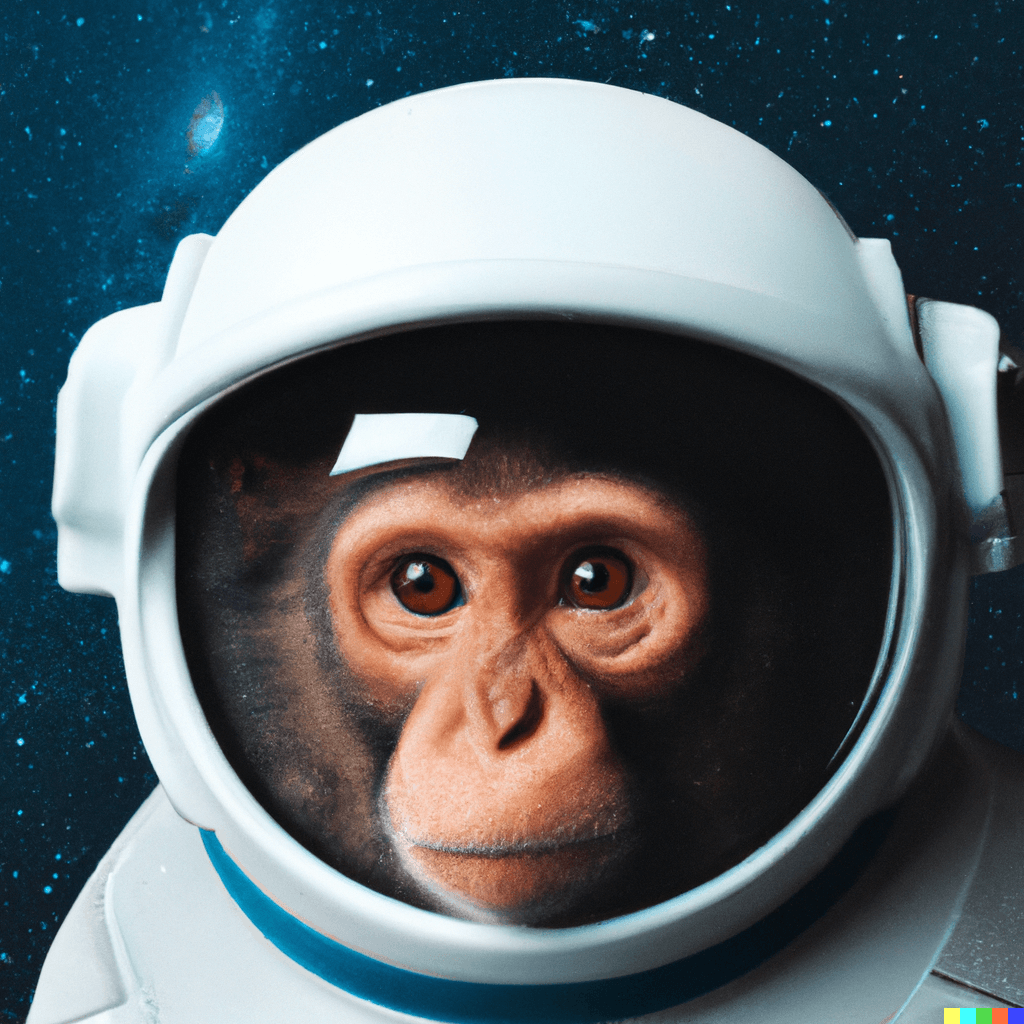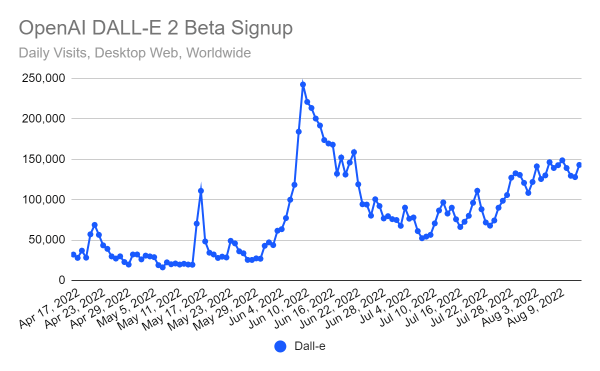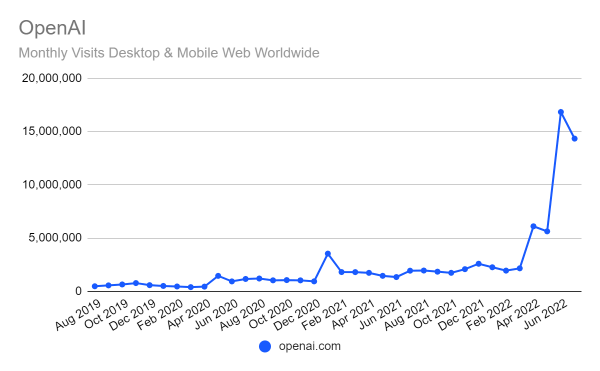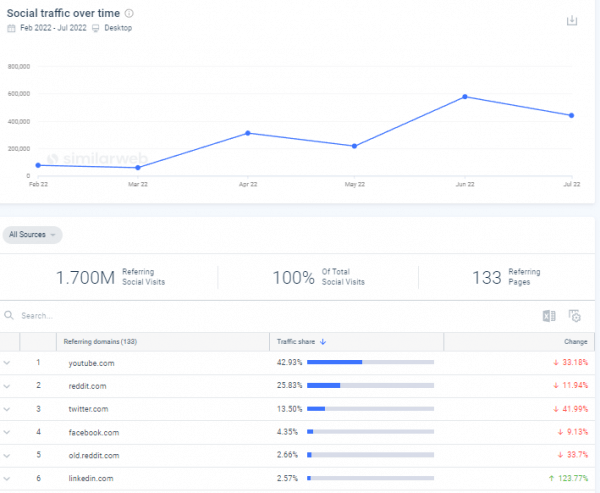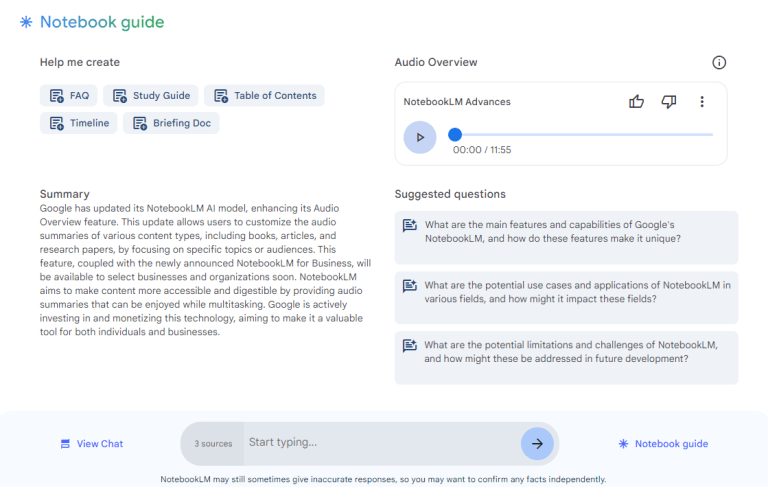DALL-E Image Generator Generates Attention for OpenAI

Pioneer in AI language models ignites the web’s imagination with a tool for turning words into images
The surprise and delight generated by OpenAI’s DALL-E 2, the text-to-image translator that recently transitioned from a research project to public beta, has catapulted the company from industry insider secret to much broader notice.
Key takeaways
- Traffic to openai.com, until recently best known for its GPT-3 large language model for machine understanding of text, hit 16.8 million visits in June, up more than 1,000% year over year. In July, traffic was up 644%, according to Similarweb estimates.
- About 60% of the desktop web visits to the site in June were to pages with information about DALLE-2, the latest version of the company’s software for generating images based solely on descriptions like “Teddy bears working on new AI research underwater with 1990s technology.”
- Of the 16.8 million visits to openai.com in June, about 30% were specifically related to information about DALLE-2, the latest version of the company’s software for generating images based solely on descriptions like “Teddy bears working on new AI research underwater with 1990s technology.”
- Daily web traffic to the beta signup page for DALL-E 2 peaked at over 242,000 visits on June 10, the day The Verge published an enthusiastic story about the “creative revolution” DALL-E 2 would spark. On July 20, OpenAI announced the software would go from only being available to researchers to being offered as a public beta, with anyone interested invited to join the waitlist.
Just add imagination
DALL-E, named after Salvador Dali and Pixar’s WALL-E robot hero, is exciting because it allows non-artists to create artwork just by providing a descriptive phrase like “monkey astronaut.” Variations can be produced by adding phrases like “digital artwork” (if you want the image to look like digital art) or “in the style of Claude Monet (if you want it to look like an Impressionist painting).
Traffic to the beta signup site
Here is how traffic to the DALL-E beta signup site has grown following press attention and the announcement of the public beta.
Meanwhile, the broader openai.com website – which until recently was mostly of interest to data scientists and AI technologists – has seen a huge influx of visitors interested in the artistic and commercial purposes of DALL-E.
A social media phenomenon
Even when access to DALL-E was limited to AI researchers, sharing of DALL-E-generated images exploded on social media, driving traffic to the OpenAI website. YouTube, Reddit, and Twitter have all been big drivers of referrals.
In June, openai.com got more than 52% of its traffic from search and 8.35% from social.
A picture is worth a thousand words
OpenAI is best known for its work on the GPT-3 large language model, and computer understanding of human language is one of the areas where computer science has been making the greatest progress in recent years. With DALL-E, OpenAI is teaching computers how a picture can be worth a thousand words. Plus, it’s a lot of fun.
As Similarweb Director of Product Management Roey Shafir wrote on our company’s internal social network, using our tools to look at the “enormous buzz” OpenAI has created by opening the DALL-E public beta to 1 million people on its wait list left him with only one question: “Now – How do I get an invite?”
The Similarweb Insights & Communications team is available to pull additional or updated data on request for the news media (journalists are invited to write to press@similarweb.com). When citing our data, please reference Similarweb as the source and link back to the most relevant blog post or similarweb.com/blog/insights/.
Contact: For more information, please contact Richard Krueger at richard.krueger@similarweb.com.
Citation: Please refer to Similarweb as a digital intelligence platform. If online, please link back to www.similarweb.com or the most relevant blog post.
Report By: David F. Carr, Senior Insights Manager
Disclaimer: All data, reports and other materials provided or made available by Similarweb are based on data obtained from third parties, including estimations and extrapolations based on such data. Similarweb shall not be responsible for the accuracy of the materials and shall have no liability for any decision by any third party based in whole or in part on the materials.
Teddy bear image By DALL-E, Public Domain, Creative Commons
Monkey astronaut image: Icygyrosi, CC BY-SA 4.0, via Wikimedia Commons
Wondering what Similarweb can do for your business?
Give it a try or talk to our insights team — don’t worry, it’s free!
